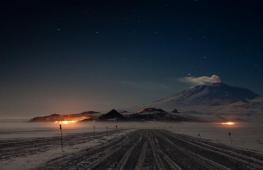Definition of geography. The science that studies the geographic shell of the Earth
Geography is one of the oldest sciences in the world. Even primitive people studied their area, drew the first primitive maps on the walls of their caves. Of course, the modern science of geography sets itself completely different tasks. What exactly? What is she studying? And what is the definition of this science?
Definition of geography: main problems and difficulties
If physics teaches "how", history explains "when" and "why", then geography tells "where". Of course, this is a very simplified view of the subject.
Geography is a very old science. The term itself has ancient Greek roots and is literally translated as "description of the earth". And its foundation was laid precisely in antiquity. The first scientist-geographer is called Claudius Ptolemy, who in the second century published a book with an unambiguous title: "Geography". The work consisted of eight volumes.
Among other scientists who made a solid contribution to the development of geography as a science, it is worth highlighting Gerhard Mercator, Alexander Humboldt, Karl Ritter, Walter Kristaller, Vladimir Vernadsky,
An accurate and unified definition of geography is still a rather difficult task. According to one of several interpretations, this is a system of sciences that study various aspects of the functioning and structure of the geographical. There is another definition of geography, according to which this science studies the patterns of distribution of any phenomenon on the earth's surface. But Professor V.P. Budanov wrote that although it is very difficult to determine the content of geography, its object, without a doubt, is the surface of the entire globe.
Geography as a science of the geographic shell of the Earth
Nevertheless, the main object of study is the geographic envelope of the Earth. Domestic science gives the following definition of this term. is an integral and continuous shell of the planet Earth, which consists of five structural parts:
- lithosphere;
- hydrosphere;
- atmosphere;
- biosphere;
- anthroposphere.
Moreover, all of them are in close and constant interaction, exchanging matter, energy and information.

The geographic envelope has its own parameters (thickness - about 25-27 kilometers), and also has certain patterns. Among these are integrity (the unity of components and structures), rhythm (periodic repetition of natural phenomena), latitudinal zonality, altitudinal zonality.
Structure of geographical science
The distinction between the natural and the thick line has passed through the "body" of the once unified geographical science, scattering its individual disciplines into completely different planes of scientific research. Thus, some physical geographical branches are more closely related to physics or chemistry than to population or economics.

The geography of the Earth is divided into two major disciplines.
- Physical.
- Social and economic.
The first group includes hydrography, climatology, geomorphology, glaciology, soil geography, and others. It is not difficult to guess that they are engaged in the study of natural objects. The second group includes population, urban studies (the science of cities), regional studies and others.
Connections with other sciences
How closely is geography related to other sciences? What place does it occupy in the system of scientific disciplines?
Geography has the closest links with such sciences as mathematics, history, physics and chemistry, economics, biology and psychology. Like any other discipline, it is also genetically related to philosophy and logic.
It is worth noting that some of these interscientific links were so strong that they gave rise to completely new so-called cross-cutting disciplines. These include the following:
- cartography (geography + geometry);
- toponymy (geography + linguistics);
- historical geography (geography + history);
- soil science (geography + chemistry).
The main geographical problems at the present stage of development of science
Strange as it may sound, one of the most important geographical problems is the definition of geography as a science. Moreover, methodologists and theorists have become so carried away with solving this problem that the question has already arisen, does such a science exist at all?

In the 21st century, the role of the prognostic function of geographical science has increased. With the help of a huge amount of analytical and factual data, various geomodels (climatic, geopolitical, environmental, etc.) are built.
The main task of geography at the present stage is not only to realize the deep connections between natural phenomena and social processes, but also to learn how to predict them. Geourbanistics is one of the most important branches of science today. The world's urban population is growing every year. The world's largest cities face new problems and challenges that require immediate and constructive solutions.


